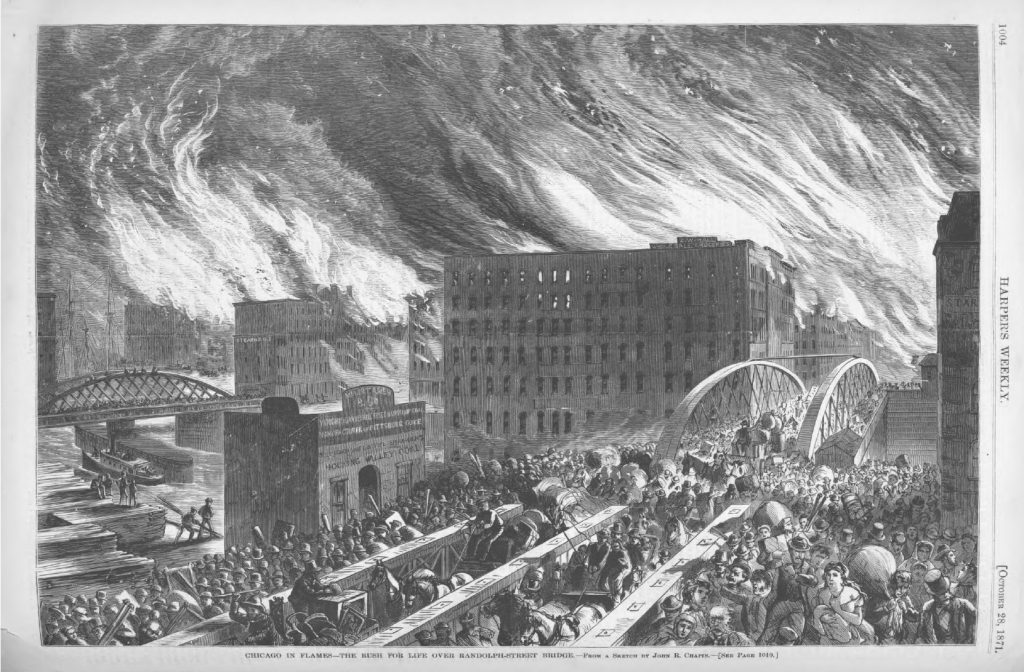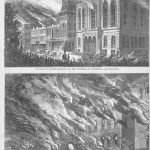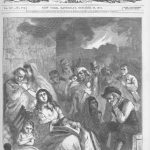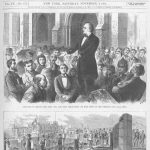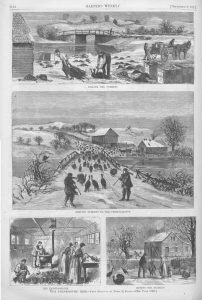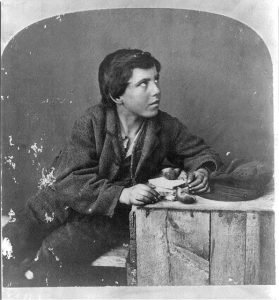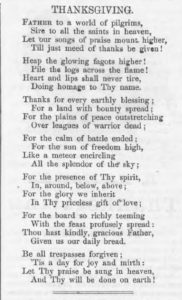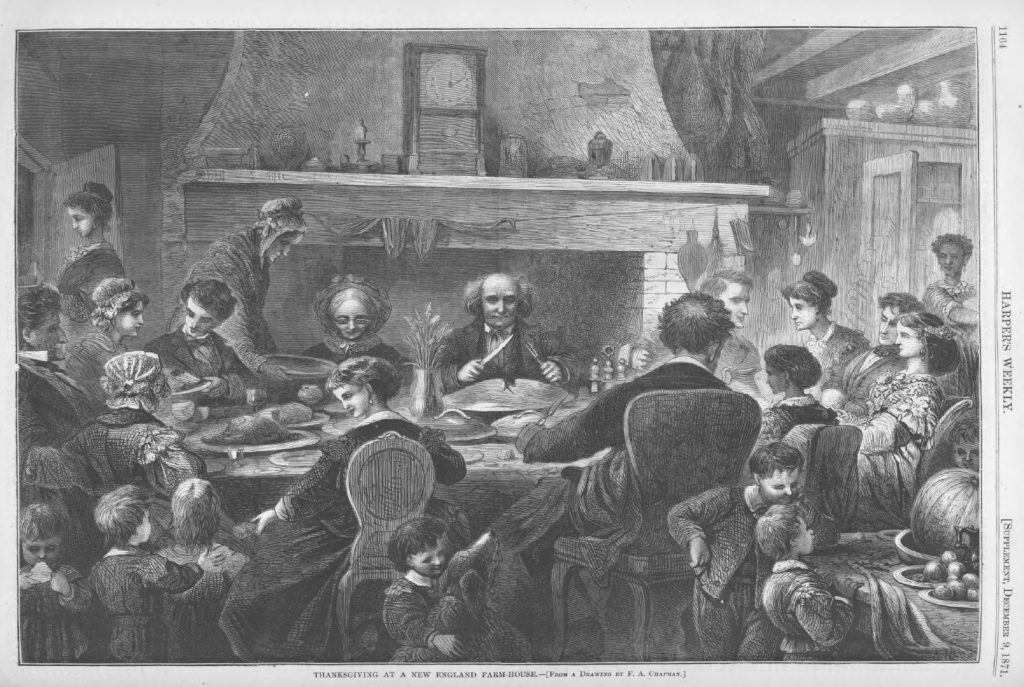Another year, another Thanksgiving. Here’s President Grant’s 1871 Proclamation:
THANKSGIVING DAY 1871
BY THE PRESIDENT OF THE UNITED STATES OF AMERICA – A PROCLAMATION
The process of the seasons has again enabled the husbandman to garner the fruits of successful toil. Industry has been generally well rewarded. We are at peace with all nations, and tranquillity, with few exceptions, prevails at home. Within the past year we have in the main been free from ills which elsewhere have afflicted our kind. If some of us have had calamities, these should be an occasion for sympathy with the sufferers, of resignation on their part to the will of the Most High, and of rejoicing to the many who have been more favored.
I therefore recommend that on Thursday, the 30th day of November next, the people meet in their respective places of worship and there make the usual annual acknowledgments to Almighty God for the blessings He has conferred upon them, for their merciful exemption from evils, and invoke His protection and kindness for their less fortunate brethren, whom in His wisdom He has deemed it best to chastise.
In witness whereof I have hereunto set my hand and caused the seal of the United States to be affixed.
Done at the city of Washington, this 28th day of October, A.D. 1871, and of the Independence of the United States of America the ninety-sixth.
U.S. GRANT
One of the calamities President Grant probably had in mind was the Great Chicago Fire that ravaged the city in early October. According to Wikipedia many people sympathized with the sufferers and sent practical help:
“In the days and weeks following the fire, monetary donations flowed into Chicago from around the country and abroad, along with donations of food, clothing, and other goods. These donations came from individuals, corporations, and cities. New York City gave $450,000 along with clothing and provisions, St. Louis gave $300,000, and the Common Council of London gave 1,000 guineas, as well as £7,000 from private donations. In Greenock, Scotland (pop. 40,000) a town meeting raised £518 on the spot. Cincinnati, Cleveland, and Buffalo, all commercial rivals, donated hundreds and thousands of dollars. Milwaukee, along with other nearby cities, helped by sending fire-fighting equipment. Food, clothing and books were brought by train from all over the continent. Mayor Mason placed the Chicago Relief and Aid Society in charge of the city’s relief efforts.”
Although Mrs. O’Leary’s cow has been exonerated as cause of the fire, some people in Chicago apparently did keep cows for the supply of fresh milk. I don’t know if anyone in New York City kept a cow in a barn out back, but I don’t think many people raised turkeys in the city, especially not enough to satisfy Gotham’s appetite, especially not at Thanksgiving. 150 years ago Connecticut was a major turkey producer. A New York City newspaper reported on the turkey operation of a Mr. Peck from the Newtown area.
From the December 2, 1871 issue of Harper’s Weekly:
OUR THANKSGIVING BIRD.
THE immediate vicinity of Newtown, Fairfield County, Connecticut is chiefly peopled by persons interested in the turkey crop. The choicest birds sent to the New York markets are from this point.
The turkey is not successfully reared in great numbers. A small flock well fed, and permitted to rove among hill and forest, will bring to its owner more profit than a large flock confined and fed upon corn and kitchen refuse. The largest dealers do not raise large flocks themselves. They make it a point to produce fine birds rather than great numbers. Each dealer has suitable houses for picking, and ice-houses for keeping or shipping the poultry, which is collected from the small farmers of the neighborhood. Our sketches are of Mr. E. M. PECK’s poultry house, and give an excellent idea of the modus operandi in any of the establishments. Mr. PECK scours the country, buying only the choice turkeys, paying (live weight) from twelve to fifteen cents per pound. The turkeys are carried to his farm in a wagon, fed for a few days, and then driven to the pen which adjoins the picking-house. Here they are fed a light provender of corn meal, to reduce the “crop,” and make the bird shapely for market. The turkey butcher takes the birds from this pen, three at a time, places his foot upon their legs, and makes a small cut in the large vein of the neck. This produces almost instant death; at the same time it permits the bird to bleed freely, which poultrymen say is necessary to secure fine meat. The birds are then taken into the house, when the feathers are picked from the legs (as the skin of the “drumstick” is too tender to be “scald picked”). The next move is to immerse the bird in water kept nearly at the boiling-point, after which it is passed to a table, where, for a cent and a half per bird, women remove the feathers. A skillful picker will dispose of seventy-five turkeys per day. The poultry is next arranged upon shelves to cool slowly, then packed in large boxes (with ice, if the weather is too warm), and shipped to New York. A single shipment of fifteen tons has been made at once, and, during a single week, Mr. E. M. PECK has slaughtered thirteen hundred birds, averaging fourteen pounds in weight each, making nearly a ton of turkey meat.
Connecticut is par excellence the turkey State of the Union; Rhode Island follows, and next comes New York. Some of the finest turkeys sent to this market are the frozen turkeys from Vermont. These do not come in until spring, and command a high price, on account of their fine quality. The extent of the poultry trade in New York is but little known. One of our leading houses, that of E. & A. ROBBINS, disposes of upward of 50,000 turkeys during the season, and others sell from 18,000 to 20,000 each, making an aggregate of nearly 2,000,000 pounds of turkey gobbled by Gothamites every season.

